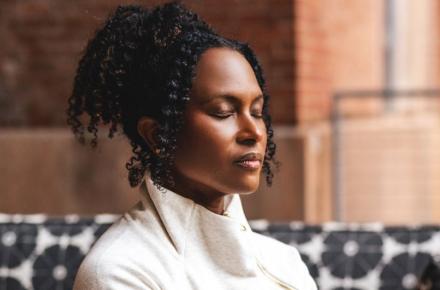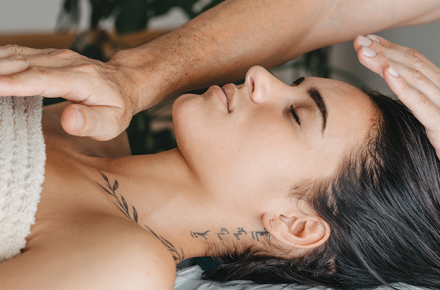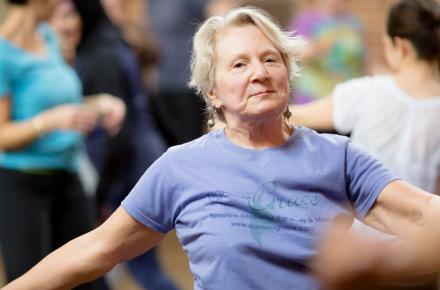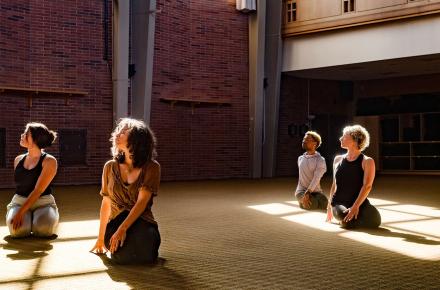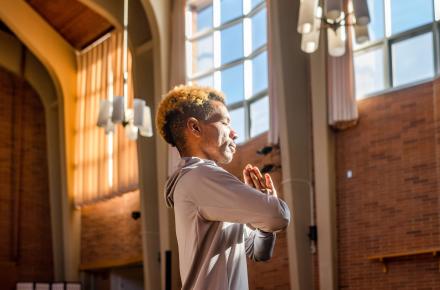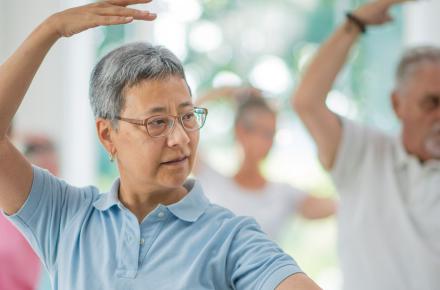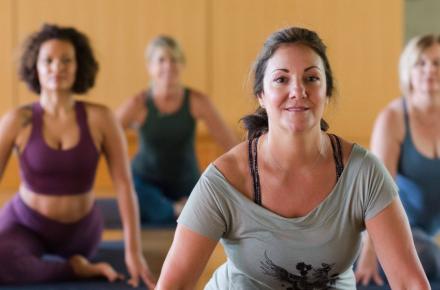Sitting Pretty: Not So Much

Forget baseball. Researchers say America has a new favorite pastime: sitting.
Various studies show that Americans spend, on average, eight hours a day on our rear ends, and the effects aren’t good: A study published in the Archives of Internal Medicine—and corroborated by a similar study out of Finland—reported that the longer people sat every day, the greater their chance of dying prematurely, even if they spent at least part of that day working out. It’s one reason Dr. David Agus argues in The End of Illness that a sitting habit may be worse than a smoking habit.
“The body is a mechanism of movement, so prolonged sitting without breaks is very hard to sustain without consequence,” says Cristie Newhart, Dean of the Kripalu School of Yoga. Still, says Cristie, it’s not necessarily that we sit, but how we sit. “Most of us slump in our chairs and sit forward of—rather than on top of—the sitting bones,” she says. “That rounds and compresses the spine and brings stress to the low back. Such slumping can also invite shallow breathing, which can create a sort of permanent state of fight-or-flight within the nervous system.”
First, says Cristie, we need to examine why we sit. For many of us, our livelihood depends on working before a computer, or near a phone, all day. But many of us also go home and fall into the after-dinner couch or computer habit, too. “Ask yourself,” says Cristie. “Does my sitting or standing have meaning? Does the day end with any sense of satisfaction? Am I happy? I have this amazing, 80-something-year-old friend who may spend more than eight hours a day in front of a computer. But her work is her mission, and she approaches it with excitement and curiosity.”
While we can, and should, compensate for our sitting addiction with a brisk walk outside, a dance class, and regular yoga, it’s also possible to minimize the damage while actually doing the sitting. Cristie’s tips:
Notice your feet. If they don’t reach the floor, put something under them, so they can rest comfortably. No sitting cross-legged, or with one foot tucked under.
Sit atop your sitting bones. The aim is to sit with a stacked spine. While seated, your pelvis should tilt slightly forward, creating a stable foundation for your upper body. When you have established this stable foundation, lengthen the spine gently. Whenever you feel tight, roll the shoulders forward, up, back, and down. Keep the upper body relaxed as best you can.
Take a break. Try to move at least once an hour, though every 20 minutes is best. Most of us, even those with desk jobs, aren’t prohibited from standing up. The problem is that our focus becomes so external—on our work, or the people around us—that we forget we have a body at all.
Do yoga. By learning what it feels like to be open, we can feel when the tension builds and it’s time to stand and release. Focus on strengthening the hamstrings and stretching the quads.
Wind down. A few minutes of before-bed stretching is great; in particular, Legs Up the Wall can help relieve back strain. You’ll sleep better, too.
© Kripalu Center for Yoga & Health. All rights reserved. To request permission to reprint, please e-mail editor@kripalu.org.











